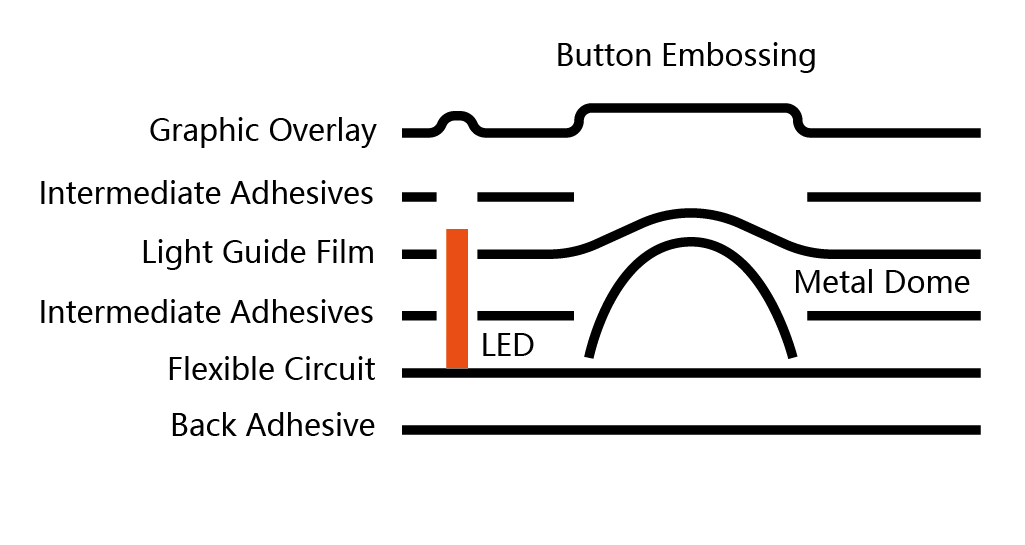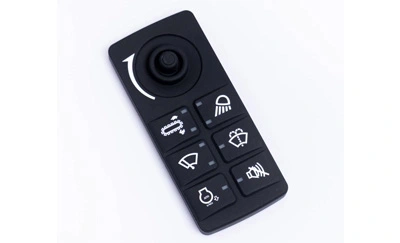Exploring membrane switch applications in extreme environments
Recognizing the Value of Membrane Layer Switch Over in Modern Electronic Devices
Membrane switches are important elements in modern electronic tools. They supply a mix of capability and style that enhances user communication. Their resilient and lightweight nature makes them ideal for different applications. As markets develop, the demand for modification and advanced features expands. Comprehending exactly how membrane layer changes contribute to technology exposes their importance in shaping the future of electronic devices. What lies ahead for this innovation?
The Fundamentals of Membrane Layer Change Technology
Usually ignored, membrane switch modern technology plays a necessary role in the modern-day electronics landscape. These gadgets, made up of several layers, serve as interface for various electronic items, varying from house home appliances to clinical equipment. A normal membrane switch includes a graphic overlay, a spacer layer, and a circuit layer, which are thoroughly set up to create a useful interface.When pressure is related to the overlay, the circuit layer is finished, enabling signals to be sent to the gadget. This innovation is known for its convenience, enabling personalization in layout, shape, and performance to satisfy certain individual demands. In addition, membrane switches are lightweight and thin, making them ideal for applications where space is a premium. Their sturdiness and resistance to ecological aspects better enhance their charm, ensuring they can stand up to extreme problems while keeping functionality. In general, membrane layer button innovation is important to producing effective and user-friendly digital tools

Trick Advantages of Membrane Switches Over
Membrane switches over offer several essential advantages that make them a recommended selection in numerous digital applications. Their style permits for a portable kind variable, allowing manufacturers to develop light-weight and smooth devices. Furthermore, membrane buttons are immune to dust, moisture, and chemicals, which boosts their durability and durability in demanding settings. The responsive responses supplied by these buttons can improve individual experience, making them instinctive and very easy to operate.Furthermore, membrane layer switches can be customized with diverse graphics and shades, permitting special branding chances. The production procedure is typically cost-effective, especially for high-volume manufacturing, as it lowers assembly time and streamlines style. Finally, membrane changes need marginal maintenance, adding to reduced overall functional prices. These benefits highlight their growing popularity in contemporary electronics, where integrity and straightforward interfaces are necessary.

Applications Across Different Industries
The convenience of membrane changes enables their extensive adoption throughout various markets. In the clinical field, they are commonly utilized in analysis tools and patient monitoring systems, using a resilient user interface resistant to contaminants. The automotive market utilizes membrane layer switches for dashboard controls, improving individual experience with smooth designs that hold up against severe problems. In consumer electronics, they offer as control board for gadgets such as microwaves and coffee makers, providing a straightforward interface that is simple to tidy. The aerospace market utilizes membrane layer switches in cabin controls, where reliability and area efficiency are vital. Furthermore, the commercial field leverages these switches in machinery and control systems to assure robust operation in demanding settings. This wide range of applications highlights the flexibility of membrane layer switches, making them essential elements in boosting capability and user interaction across diverse technological landscapes.
Modification and Layout Flexibility

Future Patterns in Membrane Layer Switch Over Growth
Arising patterns in membrane switch development indicate a growing focus on boosted capability and assimilation with wise innovations. As customer demand for much more sophisticated electronic tools rises, suppliers are concentrating on producing membrane switches that not just offer fundamental operational roles but additionally integrate features like touch level of sensitivity, backlighting, and haptic feedback.Furthermore, advancements in products are expected to improve resilience and environmental resistance, making membrane layer changes suitable for varied applications in markets such as healthcare, auto, and consumer electronic devices. The assimilation of capacitive touch technology is most likely to come to be a lot more common, allowing for sleeker layouts and enhanced user interfaces. membrane switch.Additionally, the surge of the Net of Things (IoT) is triggering the advancement of membrane layer changes that can communicate wirelessly with various other his comment is here devices, boosting interconnectivity. In general, the future of membrane layer switch modern technology appears encouraging, driven by advancement and the original site pursuit of straightforward services
Regularly Asked Concerns
Just How Do Membrane Switches Over Compare to Standard Mechanical Buttons?
Membrane buttons, being more space-efficient and using a streamlined style, comparison with traditional mechanical buttons that provide tactile feedback. The previous typically include customizable graphics, while the last normally ensure resilience and integrity in various applications.
What Products Are Frequently Used in Membrane Change Manufacturing?
Membrane layer switches are usually generated using materials such as polyester, polycarbonate, and printed conductive inks. These products provide versatility, toughness, and responsiveness, making them suitable for various applications in digital devices and user interfaces.
Can Membrane Changes Be Repaired or Reused?
Membrane switches can frequently be repaired, specifically if small concerns develop, such as sticky failure or surface area damages. Nevertheless, total reuse is generally limited as a result of put on and prospective degradation of materials with time.
Exactly How Do Environmental Variables Impact Membrane Switch Over Performance?
Ecological aspects, such as temperature level, exposure, and humidity to chemicals, significantly affect membrane button performance. Severe problems can cause degradation, impacting responsiveness and longevity, eventually compromising the performance of the tool in different applications.
What Is the Typical Life Expectancy of a Membrane Layer Switch?
The typical lifespan of a membrane layer switch typically varies from 1 to 5 million actuations, depending on aspects such as usage frequency, environmental problems, and the materials used in manufacturing, affecting resilience and efficiency longevity. A common membrane layer switch is composed of a visuals overlay, a spacer layer, and a circuit layer, which are meticulously constructed to produce a functional interface - membrane switch.When pressure is used to the overlay, the circuit layer is completed, permitting signals to be transmitted to the gadget. The Get the facts responsive comments offered by these buttons can enhance user experience, making them easy and intuitive to operate.Furthermore, membrane switches can be tailored with diverse graphics and shades, allowing for distinct branding possibilities. As consumer need for extra sophisticated electronic tools increases, manufacturers are concentrating on developing membrane layer switches over that not just serve basic operational roles but also incorporate features like touch sensitivity, backlighting, and haptic feedback.Furthermore, developments in materials are expected to improve resilience and environmental resistance, making membrane switches ideal for varied applications in sectors such as medical care, vehicle, and customer electronics. The integration of capacitive touch technology is most likely to come to be a lot more common, enabling for sleeker designs and boosted customer interfaces.Additionally, the increase of the Internet of Things (IoT) is motivating the advancement of membrane switches over that can connect wirelessly with other devices, boosting interconnectivity. Membrane layer switches, being more space-efficient and supplying a smooth layout, contrast with conventional mechanical switches that give responsive feedback